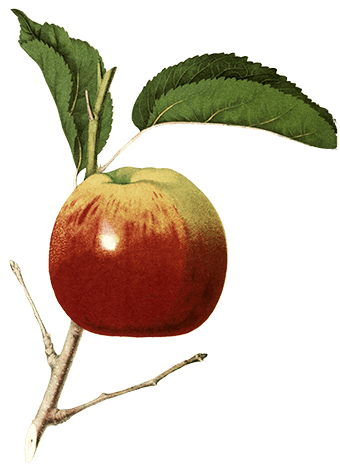Harvesting Fruit
The fruit harvesting season is generally divided into Early, Mid or late Season.
Fruit dropping is a good indication that fruit is ripe but it is best not to wait for all your fruit to fall off the tree before collecting them. Windfalls will most likely be bruised and won’t store well.
Your fruit tree should be picked at intervals. Cup your hand under the fruit and if it is ready it should separate from the tree with a gentle, half twist of the wrist. If it doesn’t come away easily you can leave it on the tree for another week.
As a general rule, early fruit can be eaten straight from the tree and once picked does not store very well. Some are delicious, with unusual, fresh flavours which do not appear in later fruit.
Mid-season apples, picked in September and early October, might keep for one or two months, depending upon the variety.
Late apples often need to be kept for the full flavour to intensify and are often much more complex than early fruit. They will often last over the whole winter, and sometimes as late as April or May. Picking late-keeping apples when they are slightly under ripe can also extend the storage period.
Storage
The amateur fruit grower is unlikely to have access to modern state of the art storage facilities and will most likely be storing their fruit in the shed or garage.
It is important that the storing environment is dark and cold but resistant to frost. I store my apples in light wooden crates that greengrocers are happy to give away. These are slatted and allow good air movement. Cardboard boxes with ventilation would do the job also.
Place fruit in carefully and only use the very best, unblemished fruit. Keep different varieties separate and mid-season varieties away from late season varieties. Check your boxes regularly for signs of rot. Apples can also be wrapped in newspaper to prolong storage but this makes inspection more difficult.

